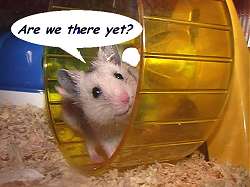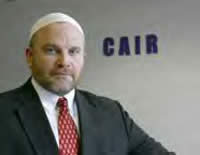 Three parallel investigations into the removal of six imams from a US Airways flight last month have so far concluded that the airline acted properly, that the imams' claims they were merely praying and their eviction was racially inspired are without foundation.
Three parallel investigations into the removal of six imams from a US Airways flight last month have so far concluded that the airline acted properly, that the imams' claims they were merely praying and their eviction was racially inspired are without foundation.An internal investigation by the airline found that air and ground crews "acted correctly" when they requested that the Muslim men be removed from a Minneapolis-to-Phoenix flight on Nov. 20. "We believe the ground crew and employees acted correctly and did what they are supposed to do," US Airways spokeswoman Andrea Rader said.
 Omar Shahin -- one of the imams and the group's spokesman -- said the men did not behave out of the ordinary while on the plane, and that passengers overreacted because some of the imams conducted prayers in the concourse before boarding.
Omar Shahin -- one of the imams and the group's spokesman -- said the men did not behave out of the ordinary while on the plane, and that passengers overreacted because some of the imams conducted prayers in the concourse before boarding. US Airways' investigation is "substantially complete" but Miss Rader said airline officials still want to meet with the imams to review the situation. "We're looking at it as a security issue and as a customer-service issue and where we might need to do outreach," she said. Airline officials have had several discussions with Mr. Shahin, but a meeting scheduled for Monday with all six men was canceled at the imams' request. "We talked with crew members and passengers and those on the ground. We've done what we typically do in a situation where there is a removal or some kind of customer service at issue," Miss Rader said. "We found out the facts are substantially the same, and the imams were detained because of the concerns crew members had based on the behavior they observed, and from reports by the customers."
The Minneapolis airport police department's report on the incident said the imams' behavior warranted their removal. The imams were not accused of breaking any laws.
 The Department of Homeland Security's (DHS) Office of Civil Rights and Civil Liberties is reviewing the actions of department members who were involved in the incident.
The Department of Homeland Security's (DHS) Office of Civil Rights and Civil Liberties is reviewing the actions of department members who were involved in the incident. Secret Service agents questioned the imams, who are accused of making negative comments about President Bush and the Iraq war. Officials of the Transportation Security Administration were involved in screening the imams and their baggage.
"There is no indication there is any inappropriate activity, at least no indication at this time," DHS spokesman Russ Knocke said. "To my knowledge, we are only doing a review, and that is a fairly routine practice with incidents like this."
The Air Carrier Security Committee of the Air Line Pilots Association investigated the incident and said, "The crew's actions were strictly in compliance with procedures and demonstrated overall good judgment in the care and concern for their passengers, fellow crew members, and the company. The decisions made by all the parties were made as a result of the behavior of the passengers and not as a result of their ethnicity," the report concluded.
The suspicious behavior cited in the report included "changing seats, stating anti-war, anti U.S.-Iraq involvement, negative comments concerning the president of the United States." The report noted that "two of the passengers requesting seat-belt extensions when their body size did not appear to warrant their use."
 Mr. Shahin told television reporters that he needed the seat-belt extension because he weighs 280 pounds. However, the police report lists his weight as 201 pounds. Weights listed for the other imams ranged from 170 pounds to 250 pounds.
Mr. Shahin told television reporters that he needed the seat-belt extension because he weighs 280 pounds. However, the police report lists his weight as 201 pounds. Weights listed for the other imams ranged from 170 pounds to 250 pounds. The imams have retained the Council of American-Islamic Relations (CAIR) as their legal counsel. CAIR officials said yesterday that initial claims by the airline contradict the official police report. "The imams are obviously concerned about a number of false and distorted representation of the facts and events, and one example is initial reports that all suggested they refused to get off the plane when personnel asked them to, and the police report said they all got off and cooperated," a CAIR spokesman said.
